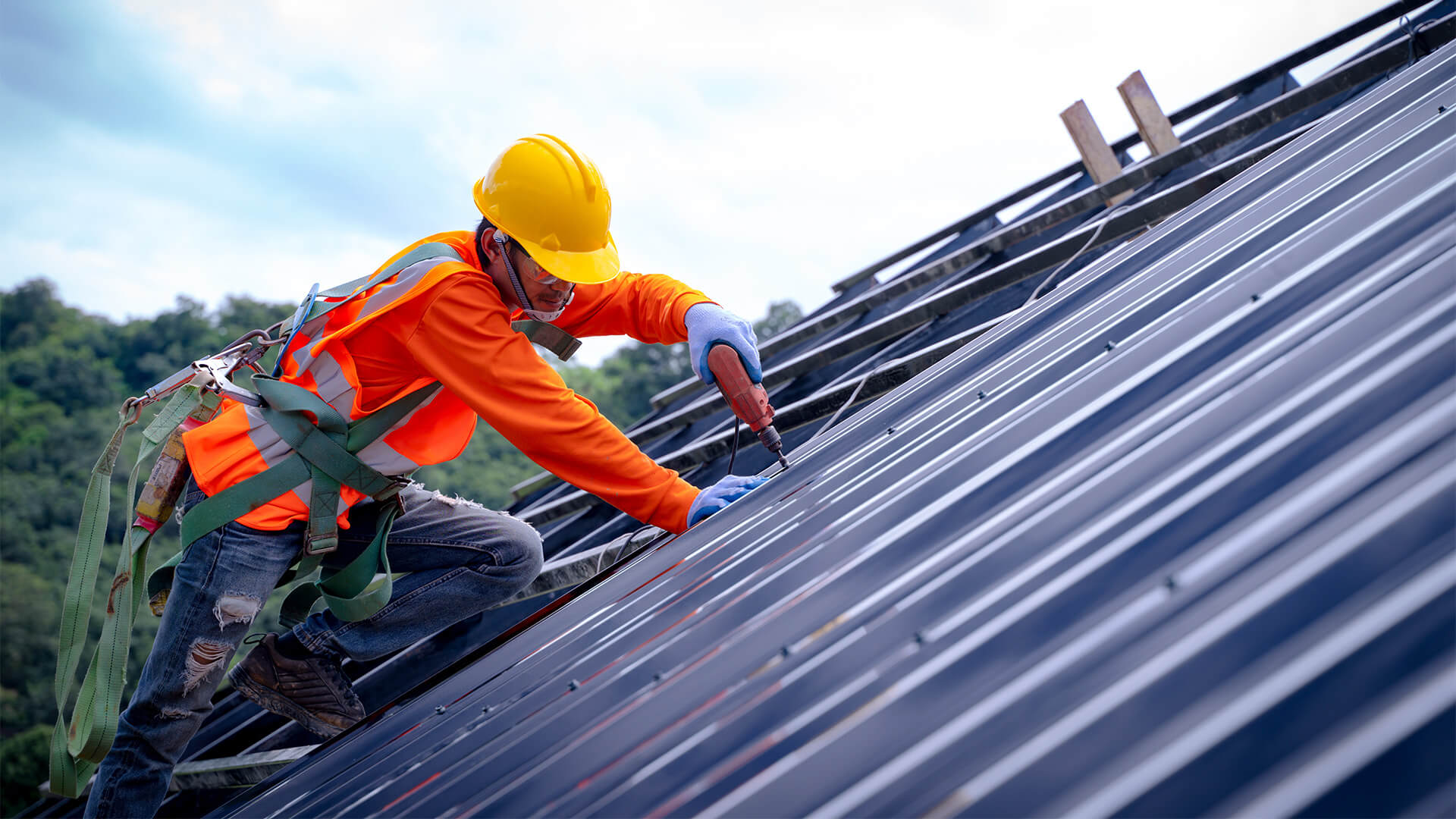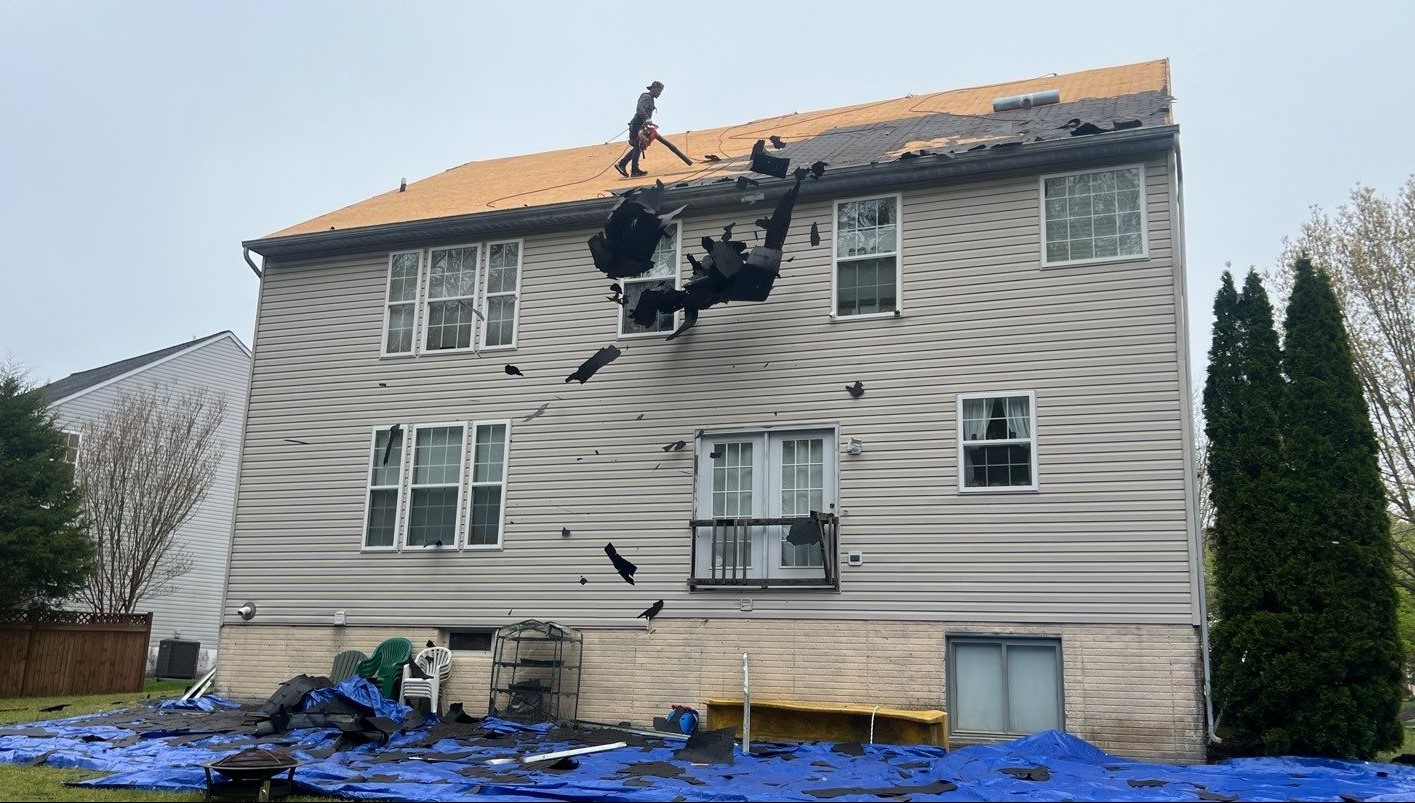Oahu Roofing: Trustworthy Roofing Solutions for Houses and Businesses
Oahu Roofing: Trustworthy Roofing Solutions for Houses and Businesses
Blog Article
Understanding the Different Kinds Of Roof Coverings: A Comprehensive Overview for Homeowners
With a variety of alternatives-- varying from the standard gable to the modern level-- each type provides unique benefits and obstacles that need to straighten with the property owner's environmental considerations and certain demands. As we explore the intricacies of different roofing types, it comes to be noticeable that one size does not fit all; the best selection may stun you.
Gable Roofings
Gable roofings, defined by their triangular form, are among one of the most popular roof covering styles because of their simpleness and effectiveness in dropping water and snow. This design features 2 sloping sides that fulfill at a ridge, permitting reliable water drainage and lessening the risk of water build-up. The steep pitch typically connected with saddleback roofs enhances their capability to handle heavy precipitation, making them appropriate for various climates.
In enhancement to their practical benefits, gable roofing systems provide visual versatility. They can be adjusted to various architectural designs, from traditional to modern homes. The style can also accommodate additional features such as dormer windows, which improve natural light and air flow in the attic room area.
Furthermore, gable roofs give adequate space for insulation, adding to power performance. House owners can pick from a variety of roof products, consisting of asphalt tiles, metal, and tiles, further enhancing personalization alternatives.
Regardless of their advantages, saddleback roofs may call for extra assistance in areas vulnerable to high winds or heavy snowfall. Overall, the saddleback roof continues to be a popular choice as a result of its blend of capability, resilience, and visual charm.
Flat Roofs
Flat roofings are frequently acknowledged for their minimal design and practical applications, especially in industrial and industrial setups (oahu roofing). These roofings include a horizontal or virtually horizontal surface, which enables very easy building and flexible room usage. While they might do not have the aesthetic charm of angled roofs, flat roofing systems supply countless advantages, specifically in urban environments where optimizing space is essential
One of the primary benefits of flat roofs is their access. House owners can make use of the roof covering space for numerous purposes, such as roof yards, balconies, or photovoltaic panel setups. Additionally, flat roof coverings are normally more affordable to set up and maintain contrasted to their sloped counterparts, as they call for fewer products and labor.
Nonetheless, level roofings do present particular challenges. Proper drain is necessary to prevent water pooling, which can lead to leakages and structural damage. Hence, picking top notch waterproofing materials and routine evaluations are critical for ensuring durability. Typical products utilized for flat roofings include built-up roofing (BUR), modified bitumen, and single-ply membrane layers, each offering distinct benefits. In general, flat roofings serve as a useful and versatile selection for lots of home owners and businesses alike.
Hip Roof Coverings
Hip roofing systems are characterized by their sloped sides that assemble on top, forming a ridge. This design stands out from saddleback roofs, as all 4 sides of a hip roof incline downwards toward the wall surfaces, offering an extra secure framework. The angle of the slopes can vary, allowing for convenience in architectural aesthetic appeals and capability.
One of the main benefits of hip roofings is their capability to hold up against hefty winds and adverse weather. The sloped surface areas allow far better water drainage, reducing the threat of leaks and water damages. In addition, hip roofings provide enhanced attic room space, which can be utilized for storage and even transformed into comfortable areas.
Nevertheless, constructing a hip roof can be more complex and expensive than simpler roof kinds, such as saddleback roofs. The additional material and labor associated with creating the inclines and guaranteeing proper structural integrity can cause higher expenditures. Regardless of these downsides, numerous property owners prefer hip roofings for their durability, visual charm, and capacity for energy effectiveness.
Mansard Roofs
Mansard roofing systems, commonly recognized by their distinct four-sided style, function 2 inclines on each side, with the reduced incline being steeper than the upper. This building design, originating from France in the 17th century, is pop over to these guys not just visually appealing however functional, as it makes the most of the functional space in the upper floorings of a building. The steep reduced slope allows for more clearance, making it a perfect option for lofts or attic rooms, which can be exchanged living areas.
Mansard roofs are identified by their flexibility, suiting numerous building styles, from conventional to modern. They can be created with various materials, including asphalt tiles, slate, or steel, providing house owners with a variety of choices to fit their preferences and budget plans. Additionally, the layout enables the assimilation of dormer home windows, improving all-natural light and air flow in the top degrees.
Nevertheless, it is important to think about the possible drawbacks. Mansard these details roofs may need more maintenance as a result of the intricacy of their layout, and their high slopes can be testing for snow and rain runoff. On the whole, mansard roof coverings incorporate sophistication with functionality, making them a preferred selection among homeowners seeking unique architectural functions.
Lost Roofs
As home owners increasingly seek simplicity and capability in their building layouts, dropped roofs have become a prominent option. Characterized by a solitary sloping aircraft, a shed roofing presents a minimal aesthetic that enhances various home designs, from modern to rustic.
One of the main advantages of a shed roofing is its straightforward building and construction, which commonly equates to decrease labor and material expenses. This style permits for effective water drainage, reducing the risk of leakages and water damages. Additionally, the upright slope provides sufficient area for skylights, boosting natural light within the inside.
Shed roofings also offer convenience in terms of usage. They can be efficiently incorporated right into enhancements, garages, or exterior structures like sheds and pavilions. In addition, this roofing design can accommodate numerous roof covering materials, consisting of metal, asphalt shingles, or even green roof coverings, lining up with eco-friendly campaigns.
Nevertheless, it is necessary to take into consideration regional environment conditions, as heavy snow tons may require adjustments to the roof covering's angle or framework. Generally, dropped roofing systems provide a functional and visually pleasing option for home owners looking to make the most of capability without compromising design.
Verdict


Gable roof coverings, defined by their triangular shape, are amongst the most preferred roofing designs due to their simpleness and effectiveness in losing water and snow. oahu roofing. The high pitch frequently linked with gable roofs boosts their ability to manage hefty rainfall, making them suitable for different climates
While they might lack the aesthetic allure of pitched roofings, level roof coverings offer numerous benefits, especially in city atmospheres where making best use of space is crucial.

Report this page